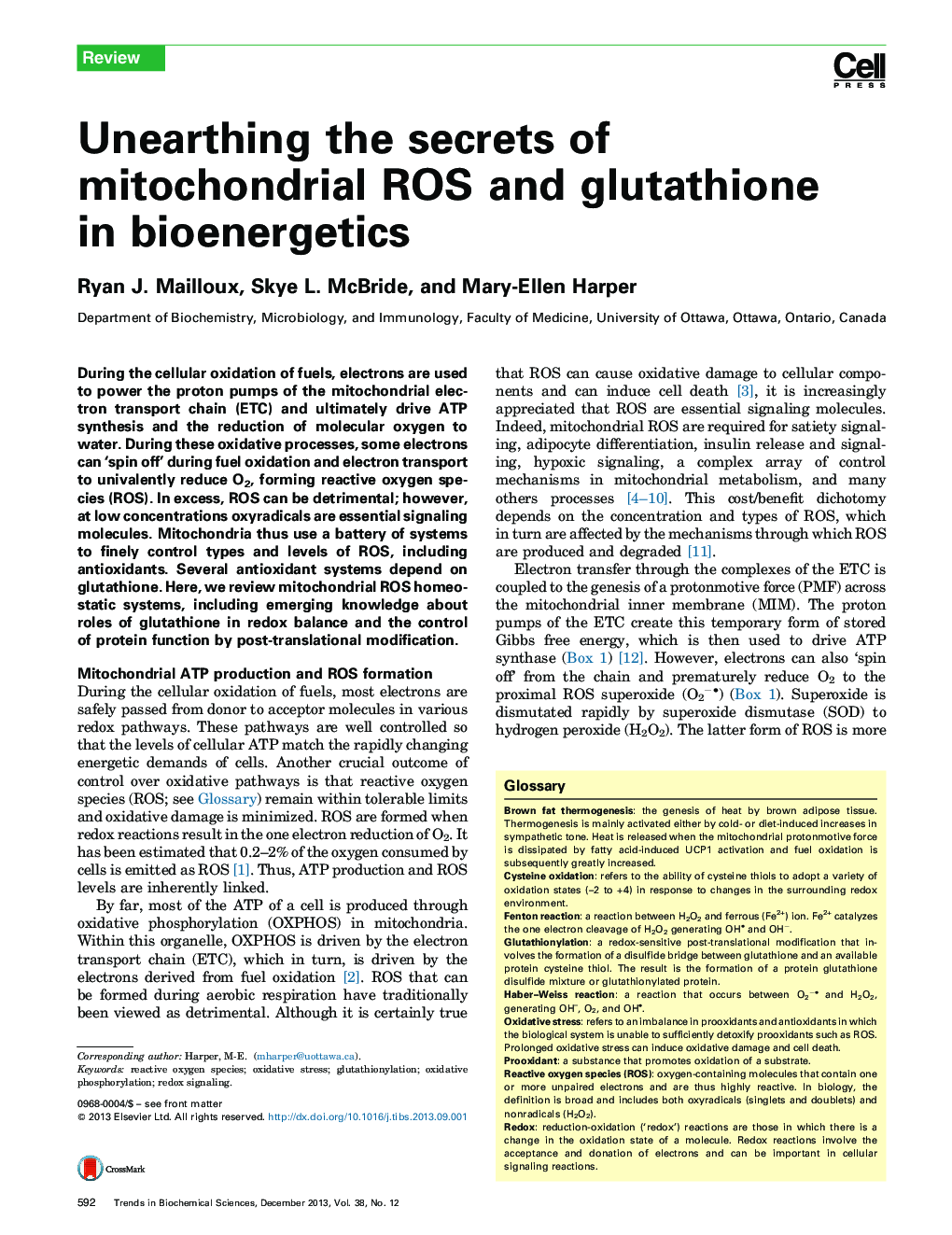| Article ID | Journal | Published Year | Pages | File Type |
|---|---|---|---|---|
| 2030806 | Trends in Biochemical Sciences | 2013 | 11 Pages |
•Reactive oxygen species (ROS) are produced during the oxidation of fuels in mitochondria.•ROS are potentially deleterious and are kept within tolerable limits by a range of antioxidant systems, including glutathione. Mitochondrial ROS emission levels are not simply scaled to fuel oxidation rate, but are affected by fuel type and by mitochondrial membrane potential.•ROS are also important cellular signaling molecules.•Glutathione not only quenches ROS but also covalently modifies proteins to affect their function or protect proteins from oxidative damage.
During the cellular oxidation of fuels, electrons are used to power the proton pumps of the mitochondrial electron transport chain (ETC) and ultimately drive ATP synthesis and the reduction of molecular oxygen to water. During these oxidative processes, some electrons can ‘spin off’ during fuel oxidation and electron transport to univalently reduce O2, forming reactive oxygen species (ROS). In excess, ROS can be detrimental; however, at low concentrations oxyradicals are essential signaling molecules. Mitochondria thus use a battery of systems to finely control types and levels of ROS, including antioxidants. Several antioxidant systems depend on glutathione. Here, we review mitochondrial ROS homeostatic systems, including emerging knowledge about roles of glutathione in redox balance and the control of protein function by post-translational modification.
